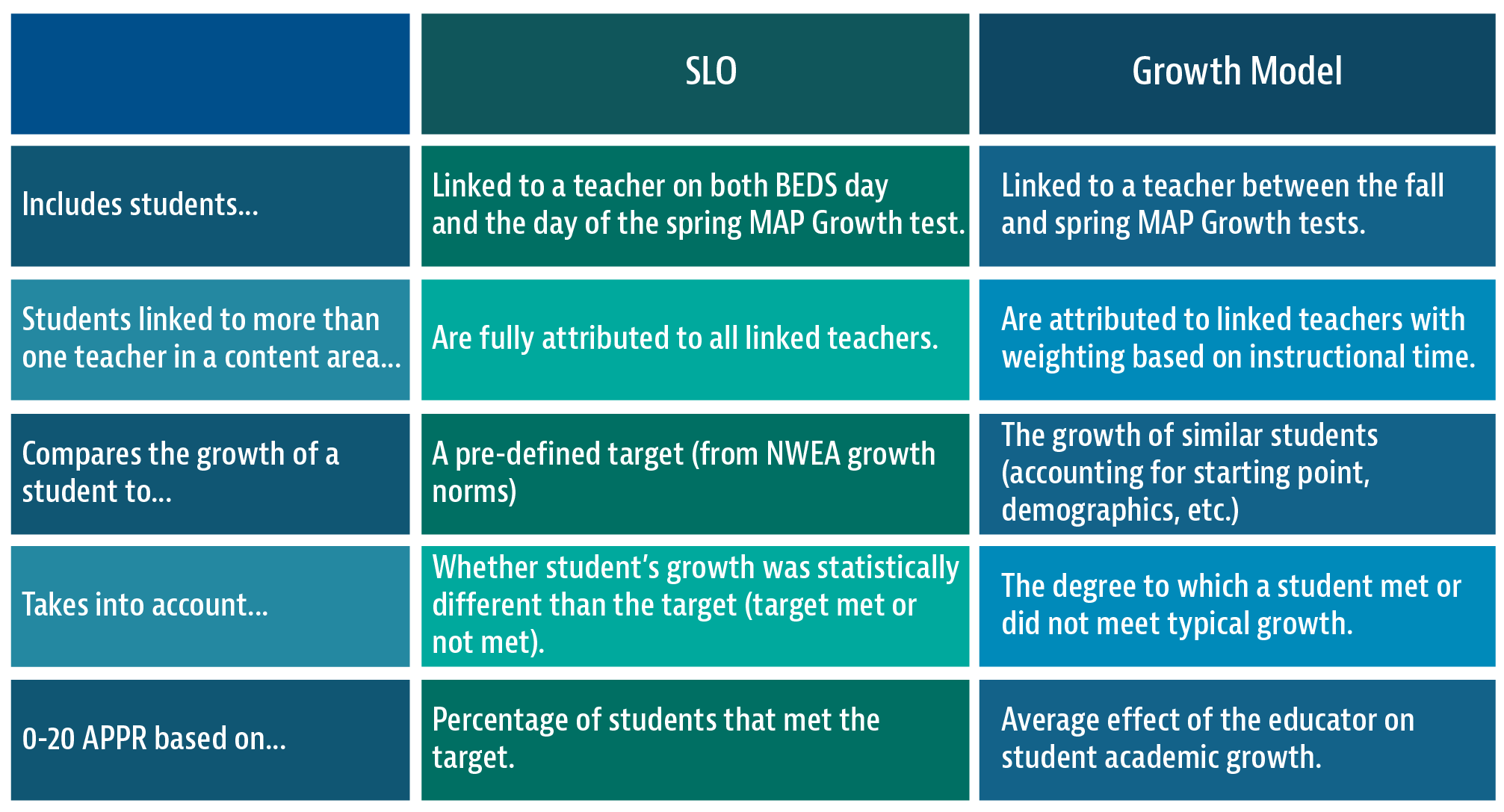Background
NWEA MAP Growth assessments have been approved by the New York State Education Department (NYSED) for use in Student Learning Objectives (SLOs) and in a Growth Model under Education Law §3012-D.
For both the SLO and Growth Model options, Education Analytics (EA) is using NWEA assessments to calculate results for teachers who teach grades K-10 in mathematics, reading, and language usage. Results will also be calculated at the grade level and school level. Districts who participate and provide all the necessary data will be provided with both Student Learning Objectives (SLOs) and Growth Model results.
Since 2012, EA’s methodologies have been developed collaboratively with New York districts. Participant conferences and webinars give transparent reviews of the methodology and explain how results are translated to the 0-20 APPR scale.
Project Overview
Our results are disaggregated by grade and subject to find areas of relative strength and areas for improvement in schools, grade-level teams, and educators. Rather than using a single number for accountability, some districts use our disaggregated results to find areas of relative strength to illuminate success or identify areas for improvement to support their educators in particular grades and subjects.
Timeline/Requirements
Districts must administer MAP within the current year’s Fall to Spring test window to meet agreed upon data submission deadlines. Provided districts meet this requirement, Education Analytics data will be provided in time to allow for local review of the results before the state-required submission of results.
Student Learning Objectives (SLOs)
The SLO approach compares the Fall-to-Spring growth of your teachers' students to NWEA's growth norms. The approach includes an adjustment for the standard error of growth to ensure students will only fail to meet their growth goal if their growth is statistically different from the growth norm. The result is a percentage of students whose growth meets or exceeds the growth norms translated to a 0-20 scale compatible with 3012-D's requirements.
Growth Model
The growth model adjusts for the specific context of your teachers' students, including prior MAP Growth score, English Language Learner Status, Special Education Status, Free/Reduced Price Lunch Status, and other student characteristics. This is commonly referred to as a value-added model.
ShareFile Overview
Once FTP users are confirmed, users should receive an email from “mail@sf-notifications.com” with the subject “[Person Name] Added You to ShareFile”. FTP users will follow the instructions in the email to set up access to the file transfer site.
Make sure that your IT department isn't blocking the usage of ShareFile. If you have further issues, email us at newyorkappr@edanalytics.org
SLO vs. Growth Model
The table below outlines the differences between the metrics:

Results for APPR or for Informational Purposes
Results from SLOs and the Growth Model are translated to a 0-20 scale compatible with 3012-D's requirements. These results are hosted on a secure portal for districts to download and use either for APPR or for informational purposes.

Results are provided at the following levels:
(SLO and growth model)
Teacher-Level Results**
- All subjects combined
- Subject specific (Mathematics, Reading, or Language Usage)
- Reading and Language Usage combined
- Mathematics and Reading combined
- Mathematics and Language Usage Combined
Grade-Level Results
- All subjects combined
- Subject specific (Mathematics, Reading, or Language Usage)
- Reading and Language Usage combined
- Mathematics and Reading combined
- Mathematics and Language Usage Combined
School-Level Results
- All subjects combined
- Subject specific (Mathematics, Reading, or Language Usage)
- Reading and Language Usage combined
- Mathematics and Reading combined
- Mathematics and Language Usage Combined
(SLO Only)
School-Level Results
- Subject specific (Mathematics, Reading, or Language Usage)
- Course-level results **
- All subjects combined
- Subject specific (Mathematics, Reading, or Language Usage)
- Reading and Language Usage combined
- Mathematics and Reading combined
- Mathematics and Language Usage Combined
** Teachers who teach students in grades K-10 in mathematics, reading, or language usage per SIRS state course codes
Data Sources
EA will be collecting student demographic, course, and student-teacher linkage data to produce SLO and Growth Model results. Files in Student Information Repository System (SIRS) format will be collected by EA from participating districts, RICs/BOCES (Regional Information Centers/Boards of Cooperative Educational Services), or NYSED (New York State Department of Education). EA will combine these data files with NWEA testing data transferred from NWEA to EA (with district permission).
Contact your NWEA Account Manager